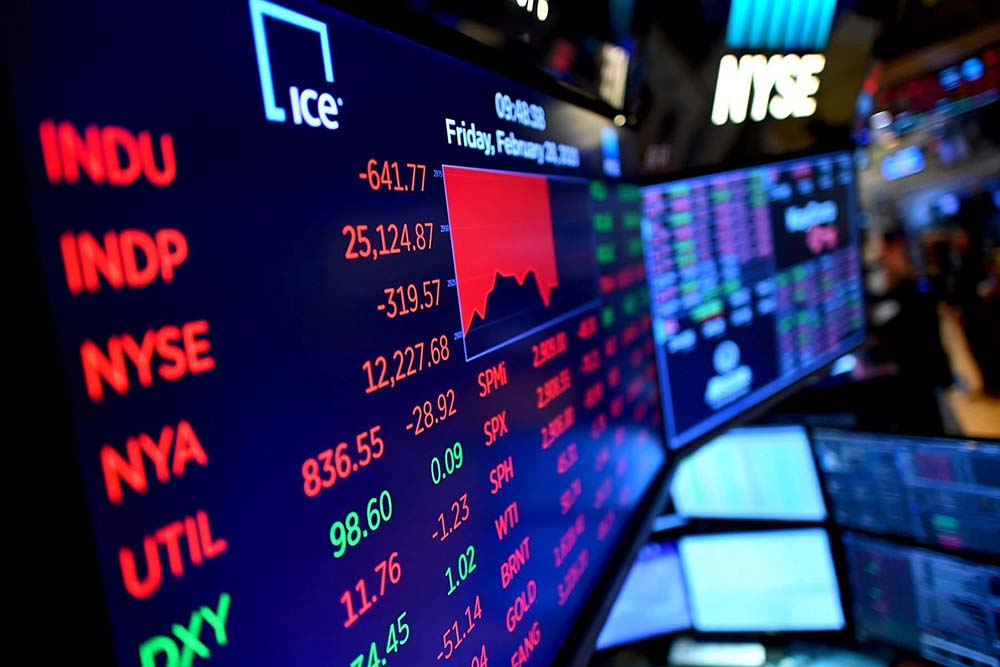
How Market Index of a Company is Formed?
One can think of a stock index as a “basket” of stocks grouped together on some basis.
When studying an index, the first thing to pay attention is what stocks or bonds it is formed from. The set of listed securities that form the basis of a particular calculated index that determines what information can be obtained by observing its dynamics.
Generally speaking, the main purpose of compiling a stock index is to create an indicator with which investors could characterize the general direction and stock exchange quotation “speed” of various companies engaged in a particular industry.

Studying index dynamics helps stock exchange participants understand the influence of certain events on quotations. If, for example, oil prices raise, it would be logical to expect the growth of quotations for all oil companies. However, shares of different companies grow at different rates, while some may not grow at all. A corresponding index helps understand the general movement trend of the market segment without the need to evaluate the positions of many disparate companies.
Index comparison provides an understanding of how different sectors trade on the market in relation to each other.
Indices are always published by certain organizations or analysts. Some have existed for 150 years and, since an index is always administered by somebody, modern exchange instruments allow generating any number of indices for any analyst to monitor. These are technical parameters of an index. They also include semantic parameters. Behind an index there are often analysts who keep a newsfeed related to their index and the people who can tell how the index did over the past year, if, for example, the index has shown “wild growth since May.” These analysts can then point towards 4 key events in May that have influenced this growth.
What are indices for?
To understand how the U.S. stock market is doing, you can, of course, analyze the quotes of all the securities on the New York Stock Exchange, but that is a long and difficult process. Moreover, different companies’ stocks can go up and down independently at any given time, with some changing simultaneously while others do not budge at all. Stock indices were invented precisely to make following the market easier.
To understand the market situation, an experienced investor can check a single index value and immediately understand the general trend, whether there are more buyers or sellers, whether stock prices are going up or down, whether bond yields are growing or declining, etc.
Indices also help get an idea of the current economic cycle: how investors behave in the stock, bond, and currency markets largely illustrates the general state of the economy and their future expectations.
Identifying the most promising and growing market segments is much easier thanks to industry indices as they help understand which industries are doing well now or will be the beneficiaries of growth in the future.
Indices also help evaluate the outcome of your investments. To understand how successful of an investment they made, investors often compare their results to an index. The main goal for most investors is to earn a return at least in line with the index. If passive investors lend money in index funds for this purpose, active investors, on the contrary, try to outplay the market. In practice, however, few find meaningful success.
The worldwide trendsetter here is undoubtedly the USA, which has over 1000 indices, many of them comprising entire industry families. However, in addition to international indices there are also numerous local indices, e.g. Mosbirzhi for the Russian stock market, FTSE 100 for the British market, Nikkei for the Japanese market, and so on.
How does one utilize indices in their work?
Generally speaking, the existence of an index has several purposes. They can be used for:
- To get an idea of the general stock price dynamics of a certain group: companies, countries, industries, etc. This data is often used for speculative transactions.
- To access derivative instruments based on the index itself. For example, there are futures for the RTS Index. Such contracts are most often used to hedge risks (see our article on futures for details).
- To procure data on various investors’ attitudes. Growing indices usually signifies that investors hold a positive attitude towards pouring funds into certain stocks.
- To monitor indices over a prolonged period of time and get an idea on the investment climate in a particular country or region.
- Often, in addition to the index value itself, information is published about the total turnover of shares of its constituent companies. The change in these figures makes it possible to judge general trader activity on the market when dealing with a certain type of securities.
There are hundreds of thousands of companies in the world whose securities are traded on stock exchanges, making it impossible to track all price changes. Financiers invented indices to understand the main sentiment on the market. These show an average value change for a certain group of securities.
Investors use stock indices to evaluate the situation on the trading floors and predict future trading results. Indicators are calculated for different countries, industries, or a certain group of securities, i.e. stocks, bonds, and other assets.
A stock exchange index is usually not the average value of the shares of all companies on the trading floor. Most often stock indicators are calculated for a certain number of stocks. Predominantly these are securities issued by the most expensive companies or stocks with the highest trading volumes.
The best-known international indices:
- Dow Jones Industrial Average (DJIA), an index of the New York Stock Exchange (USA) that includes 30 stocks belonging to major industrial companies;
- NASDAQ Composite (IXIC), an index of the NASDAQ American Stock Exchange, calculated on the basis of quotations for all traded stocks. These are mainly Internet holdings, electronics and software manufacturers. Five companies account for nearly a third of the weight of the NASDAQ Composite: Microsoft, Apple, Amazon, Facebook, and Alphabet;
- FTSE 100 (FTSE) is the index of the London Stock Exchange (UK), the largest in Europe, calculated by the FTSE Group on the basis of the share prices of 100 companies with the largest capitalization, listed on the London Stock Exchange;
- DAX is the German stock index, which includes 30 shares of the largest German companies. The index is calculated by Deutsche Börse AG;
- CAC 40 is the stock index of France that includes the 40 largest companies traded on Euronext Paris, Europe’s second-largest stock exchange;
- S&P 500 (SPX) is considered by Standard & Poor’s based on quotations of 500 shares from the world’s largest companies;
- Nikkei 225 (N225) is the index of the Tokyo Stock Exchange (Japan), calculated as a simple arithmetic mean of 225 prices of the most liquid shares;
- Shanghai Composite (SSEC) is an index of the Shanghai Stock Exchange (China).
It is possible to invest in a stock index by, for example, buying all the securities included in the index on the exchange or the securities belonging to ETF (Exchange Traded Fund) investment funds, whose portfolio mimics the composition of the corresponding stock index.







